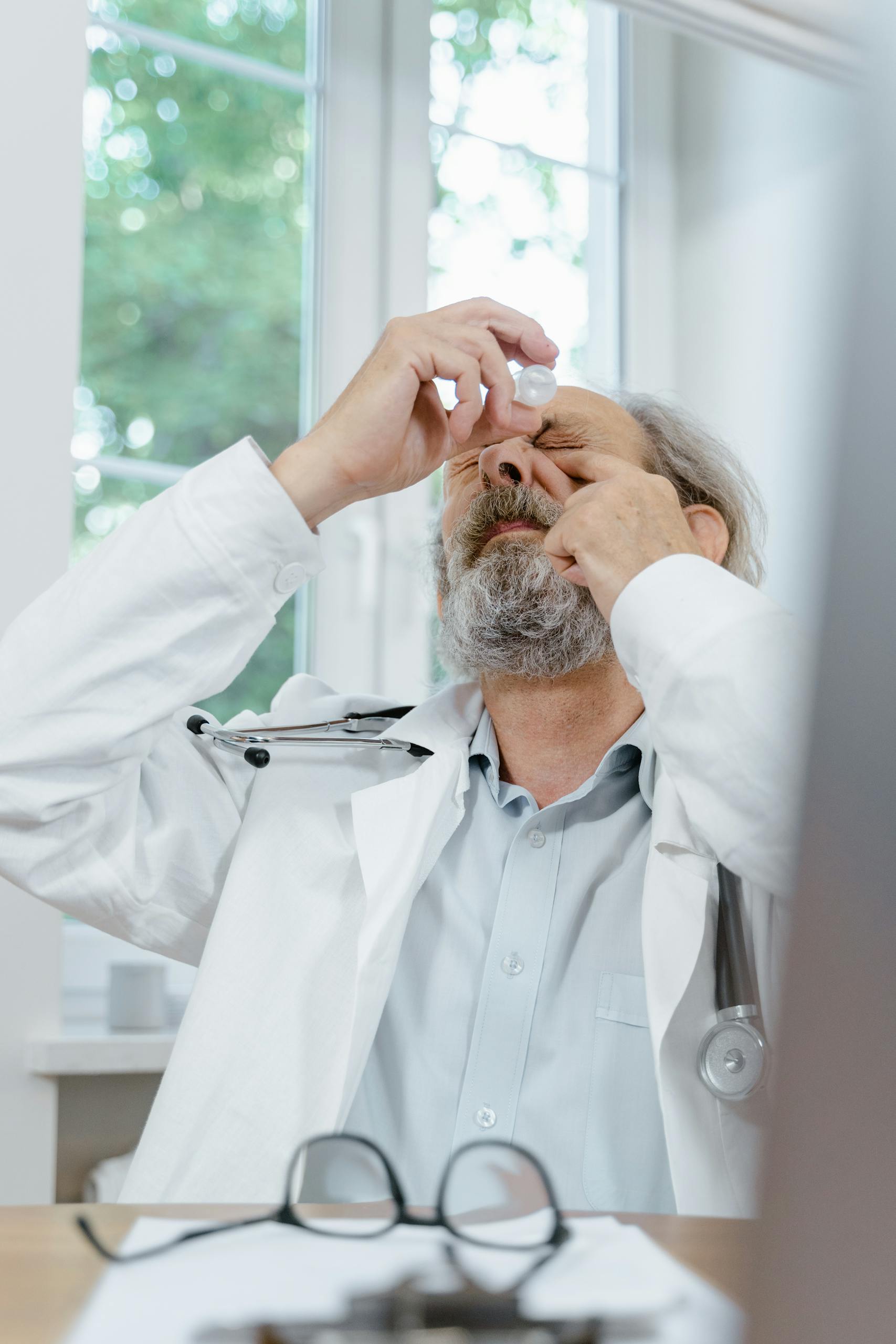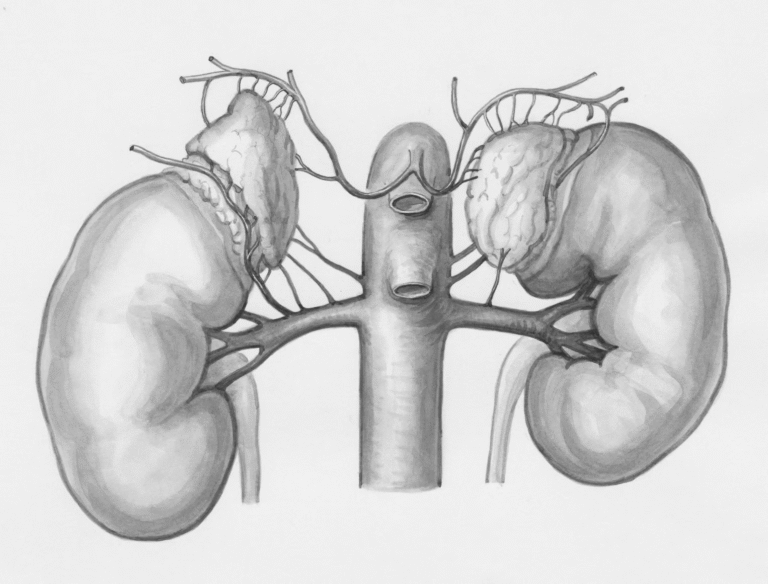New Eye Drops Show Promising Results for Presbyopia

A recent study presented at the 43rd Congress of the European Society of Cataract and Refractive Surgeons (ESCRS) has brought forward an intriguing development in the management of presbyopia. This common age-related condition, which makes it difficult to focus on nearby objects, may now have a potential non-surgical alternative in the form of specially formulated eye drops.
The study involved 766 patients with an average age of around 55 years, including 373 women and 393 men. Researchers tested different formulations of drops containing pilocarpine and diclofenac, and the results suggest meaningful improvements in near vision — improvements that were noticeable within an hour and could last for up to two years.
What Exactly Is Presbyopia?
Presbyopia affects almost everyone at some point, usually starting in the early to mid-40s. As the eye ages, the lens becomes less flexible, making it harder to focus on close-up objects. People notice this when reading small print, working on a computer, or doing tasks that require near vision.
Traditionally, the main solutions are:
- Reading glasses
- Bifocal or multifocal lenses
- Surgical procedures (such as lens replacement or corneal inlays)
While effective, these options have limitations. Glasses can be inconvenient and socially bothersome for some people, while surgery carries risks and complications. That’s where the new pharmacological approach could make a difference.
How the Drops Were Designed
The drops were developed at the Center for Advanced Research for Presbyopia in Buenos Aires, Argentina, led by Dr. Giovanna Benozzi, building on earlier work by her late father, Dr. Jorge Benozzi.
The formulation combines two active ingredients:
- Pilocarpine – an older drug known to constrict the pupil and activate the ciliary muscle, which helps adjust focus for different distances.
- Diclofenac – a non-steroidal anti-inflammatory drug (NSAID) included to reduce inflammation and counteract discomfort that can arise from pilocarpine use.
The addition of diclofenac is important because pilocarpine alone can sometimes cause irritation or other unwanted side effects.
Dosing and Administration
Patients were instructed to use the drops twice daily:
- Once in the morning upon waking.
- A second dose about six hours later.
- An optional third dose could be added if symptoms recurred or if additional comfort was needed.
The researchers tested three versions of the drops, each containing the same amount of diclofenac but different concentrations of pilocarpine: 1%, 2%, and 3%.
Measuring the Results
Vision improvement was assessed using the Jaeger chart, a standard tool for measuring near visual acuity. Importantly, the testing was done without reading glasses, making it a true measure of how much the drops alone could help.
Here are the main findings:
- On average, patients improved by about 3.45 Jaeger lines just one hour after the first dose.
- These improvements weren’t fleeting — they lasted with regular use. The median duration of sustained benefit was 434 days, and some patients maintained improvements for up to two years.
Results by Group
- 1% pilocarpine group (148 patients): 99% were able to read two or more extra lines on the Jaeger chart.
- 2% pilocarpine group (248 patients): 69% were able to read three or more extra lines.
- 3% pilocarpine group (370 patients): 84% were able to read three or more extra lines.
These results suggest that lower concentrations may work well for patients with milder presbyopia, while higher concentrations are more effective for advanced cases.
Side Effects and Safety
As with any treatment, safety is a key concern. In this study:
- Temporary dim vision was the most common side effect, affecting about 32% of patients.
- Irritation when instilling the drops occurred in about 3.7%.
- Headaches were reported in about 3.8%.
Importantly:
- No serious adverse events were reported, such as retinal detachment or dangerous increases in intraocular pressure.
- No patients discontinued treatment due to side effects.
This suggests that the drops were well-tolerated overall, although experts caution that longer-term use of pilocarpine and topical NSAIDs can carry risks, such as reduced night vision or potential corneal issues.
Why This Matters
If confirmed in larger, multi-center studies, this treatment could become a game-changing option for people who aren’t good candidates for surgery or who dislike the inconvenience of glasses. Instead of relying on optical or surgical correction, patients could use a few drops a day to regain functional near vision.
It also expands the range of presbyopia care, offering a personalized approach where treatment can be adjusted depending on the severity of the condition.
Limitations of the Study
While the results are promising, there are some limitations worth noting:
- The study was retrospective and conducted at a single center. This means there’s potential for selection bias and limited generalizability.
- The sample was from one region in Argentina, so it’s unclear how results would apply to populations with different demographics or health profiles.
- The study has not yet been fully published in a peer-reviewed journal, making it important to wait for more rigorous evaluation.
Experts also stress that long-term safety still needs to be studied. Prolonged use of pilocarpine may affect vision in low light, and NSAID eye drops used over years could pose risks to the cornea.
How These Drops Compare to Other Treatments
Currently, there are a few pharmacological treatments for presbyopia under investigation or already in limited use. For example:
- Pilocarpine-only drops have been tested and even marketed in some places, but side effects are a concern.
- Other drugs like aceclidine are also being researched as alternatives to pilocarpine.
The advantage of the pilocarpine-diclofenac combination is that it aims to reduce side effects while maintaining or even boosting effectiveness.
Still, larger studies will need to directly compare these approaches to see which is best in terms of safety, effectiveness, and patient satisfaction.
Broader Context: The Challenge of Presbyopia
To understand why this research is getting attention, it helps to consider how widespread presbyopia is:
- Virtually everyone experiences it as they age, usually starting in their 40s.
- By age 50, nearly 100% of people will have some degree of presbyopia.
- Globally, it is estimated that over a billion people live with presbyopia, many in areas without easy access to reading glasses.
This makes non-invasive, low-cost, and widely available solutions extremely valuable, not only for convenience but also for improving quality of life and productivity.
What Happens Next
According to Dr. Giovanna Benozzi and colleagues, the next steps include:
- Continuing to study patients who have used the drops for over ten years.
- Assessing how the drops affect quality of life, not just near vision charts.
- Investigating the physiological mechanisms more deeply.
- Encouraging multi-center, randomized controlled trials to validate the results.
Experts like Professor Burkhard Dick, ESCRS President-Elect, agree that this approach looks promising but emphasize that broader and longer studies are necessary before it can be widely recommended.
Conclusion
The pilocarpine-diclofenac eye drop study offers strong early evidence that a pharmacological solution could help people with presbyopia improve their near vision without relying exclusively on glasses or surgery. While side effects appear mild and manageable, the research is still early, and more rigorous trials are needed to confirm both effectiveness and safety over the long term.
If validated, this treatment could significantly reduce dependence on reading glasses for millions of people worldwide, offering a convenient and non-invasive alternative for age-related vision decline.





